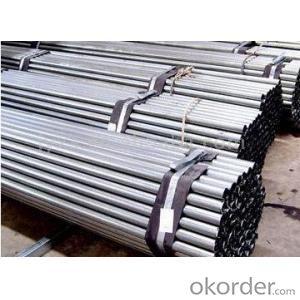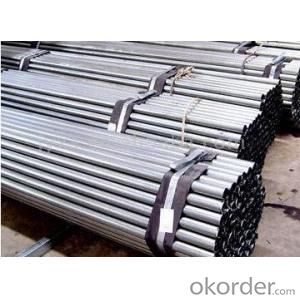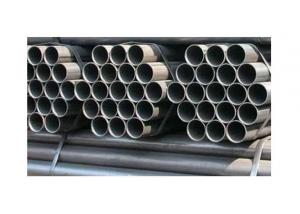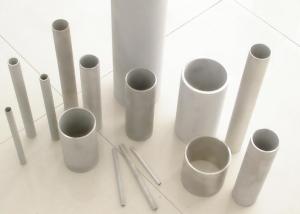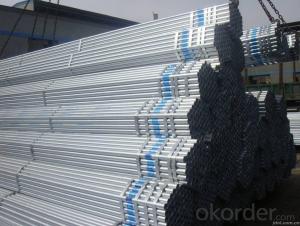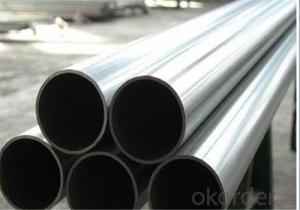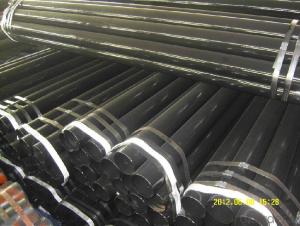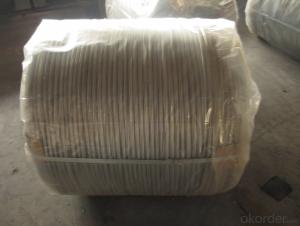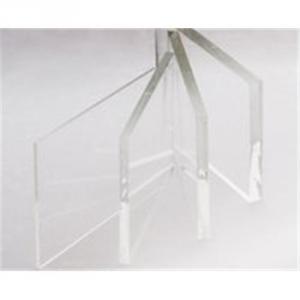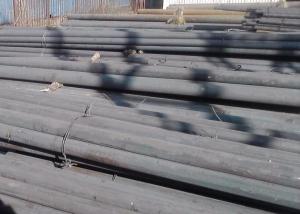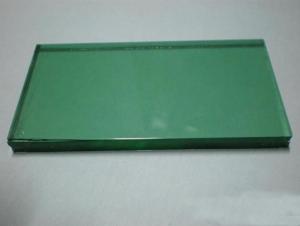Galvanized Seamless Steel Pipe
- Loading Port:
- China Main Port
- Payment Terms:
- TT OR LC
- Min Order Qty:
- -
- Supply Capability:
- -
OKorder Service Pledge
OKorder Financial Service
You Might Also Like
product name :Galvanized Seamless Steel Pipe
Section shape: round
Dimension: DN32 external
diameter42.4mm thickness3.5mm
Surface Treatment
1. Galvanized
2. PVC,black and color painting
3. Transparent oil,anti-rust oil
4. According to clients requirement
galvanized steel pipe
Product | GALVANIZED STEEL PIPE SPECIFICATION | |
Specification | Section shape: round | |
Thickness: 0.6mm-20mm | ||
Outer diameter: 15mm-508mm | ||
Zinc coating: >200g/m2 | ||
Standard | BS1387,GB3091,ASTMA53, B36.10, BS EN1029, API 5L, GB/T9711 etc | |
Material | Q195, Q235, Q345; ASTM A53 GrA,GrB; STKM11,ST37,ST52, 16Mn,etc. | |
Fabrication | Plain ends, cutting, threading, etc | |
Surface Treatment | 1. Galvanized | |
2. PVC,black and color painting | ||
3. Transparent oil,anti-rust oil | ||
4. According to clients requirement | ||
Package | 1. Bundle | |
2. Bulk | ||
3. Plastic bags ,etc | ||
Min order | 1 tons, more quantity price will be lower | |
Payment terms | T/T, L/C at sight, western union etc. | |
Deliver time | Within 7-30 days after deposit, ASAP | |
Application | Construction,machine structure pipe, Agriculture equipment pipe, Water and gas pipe, Greenhouse pipe, Scaffolding pipe, Building material tube, Furniture tube, Low pressure fluid tube, Oil pipe, etc | |
Others | We can do special orders as customer’s requests. | |
We also can provide all kinds of steel hollow pipes. | ||
All the production process are made under the ISO9001:2008 strictly | ||
Business type | Manufacture and exporter | |
Contact | Tell: 0086-18722571895 | |
Name:Tony | ||
skype:tonyliu20112 |
- Q: What are the guidelines for splicing steel rebars in concrete?
- The guidelines for splicing steel rebars in concrete typically include ensuring proper bar alignment, using appropriate splice connectors, maintaining minimum splice length, and following the recommended lap splice lengths based on bar diameter and reinforcement design requirements. Other factors such as bar placement and spacing, concrete cover, and the use of mechanical or welded splices may also be considered depending on the specific project and local building codes.
- Q: What are the differences between adhesive and adhesive tape types?
- (adhesive bonding, bonding, cementation, adhesive) refers to homogeneous or heterogeneous surfaces connected together with adhesive technology, stress distribution is continuous, light weight, or seal, etc. the majority of process temperature. Bonding is especially suitable for the connection of different materials, different thickness, ultra-thin specifications and complex components. Bonding has the most rapid development in modern times, and has a wide range of applications. It also has a great impact on the progress of new and high science and technology and the improvement of people's daily life. Therefore, it is very important to research, develop and produce all kinds of adhesives.
- Q: Well, yesterday my bestfriend pierced my navel. She did a good job because it was really straight. We used a medium sized safety pin I have that in me right now. I want to take a shower, so should I shower normally w/ the safety pin on? I'm getting the ring today at school, so yeah.How do we clean it w/ the ring? how do I decrease the pus, swelling, and bleeding? ( I don't have them right now. )What're the best ways to keep them clean?What type of clothing should I wear?Thank-you so much.
- Use the same type fittings as the pipe. Do not use galvanized on a gas line unless you check with your local code department first. It is not code in most areas although some do allow it. Selling the house in the future is another reason not to mix. If a Home Inspector sees it and it is against code, you will be required to tear the piping apart and change it before selling. Easier to do it right the first time.
- Q: What are the different types of steel reinforcement meshes?
- There are several types of steel reinforcement meshes used in construction, including standard welded wire mesh, ladder mesh, truss mesh, and expanded metal mesh. Each type has its own specific design and application, providing reinforcement and stability to concrete structures in different ways.
- Q: I purchased some used rims over the weekend, the are in OKAY shape, its gonna take a lil elbow grease to get them looking niceThe thing is, i dont know if what i have are Chrome or Aluminum w/ chrome plating, some of the chrome is chipping which leads me to believe that they are aluminum w/ chrome plating? I'm not sure.any help would be appreciated.Also i would like to know what would be the best way to clean them.thanks again.
- I know exactly what to do, and I'm not kiddingI have rec'd a ton of behavior/parent training in home because of my son's autism and I have a typical daughter and all this stuff works soooo well on her When she says I 'need' you need to make her ask you nicely'Mommy, can I please have_? Everytime she says things in an undesireable way, model exactly how you would like her to say it nicelyChildren are naturally bossy, we just have to show them how to be I spent the whole week with my sister in law and her 'typical' 4 yr old daugherMy son is 4.5 with high functioning autism and we have our almost 3 yr old daughterI was shocked at how bossy this little girl was to her mother, but when she was bossy, mom just did what she wanted to shut her up, and that just reinforced that behaviorEven when my kids say I want' I say can you ask me nicely(I model it if necessary), and they totally rephrase it on their ownIt's become a habitIt is much less annoying Most kids need to be taught how to share and take turns, and talk nicely to othersThey only know how to express their needs, so we have to show them how to do it in the right way so they get their needs met, and we don't go crazy being bossed around by a child.
- Q: What are the specifications for steel wire rod used in offshore wire strands?
- The specifications for steel wire rod used in offshore wire strands are typically determined by industry standards and regulations. These specifications are designed to ensure the safety and reliability of the wire strands used in offshore applications. Some of the key specifications for steel wire rod used in offshore wire strands include: 1. Material composition: The steel wire rod used in offshore wire strands should be made from high-quality carbon steel or alloy steel. The material composition should meet specific requirements in terms of strength, durability, and corrosion resistance. 2. Tensile strength: The wire rod should have a high tensile strength to withstand the heavy loads and stresses experienced in offshore environments. The required tensile strength may vary depending on the specific application and project requirements. 3. Diameter and tolerance: The wire rod should have a specific diameter and tolerance to ensure compatibility with the wire strand manufacturing process. The diameter and tolerance may vary depending on the wire strand design and application. 4. Surface finish: The wire rod should have a smooth surface finish to facilitate proper adhesion and bonding with the surrounding materials, such as resin or protective coatings. The surface finish should also be free from any defects, such as cracks or scratches, which could compromise the performance of the wire strand. 5. Corrosion resistance: Offshore environments are exposed to harsh conditions, including saltwater, moisture, and corrosive elements. Therefore, the steel wire rod used in offshore wire strands should have excellent corrosion resistance properties to prevent degradation and maintain structural integrity over time. 6. Certified testing and quality control: The wire rod should undergo rigorous testing and quality control measures to ensure compliance with industry standards and specifications. This may include testing for mechanical properties, chemical composition, surface finish, and corrosion resistance. It is important to note that the specific specifications for steel wire rod used in offshore wire strands may vary depending on the project requirements, industry standards, and local regulations. Therefore, it is essential to consult the relevant codes and standards applicable to the specific offshore application to determine the exact specifications for the wire rod.
- Q: How are steel strips used in the manufacturing of railway tracks?
- Steel strips are an essential component in the manufacturing of railway tracks. They are used to form the base or foundation of the tracks, providing stability, strength, and durability. Firstly, steel strips are used to create what is known as the rail bed. The rail bed is the foundation upon which the railway tracks are laid. It is a layer of compacted soil or stone, reinforced with steel strips, that provides a solid base for the tracks. The steel strips act as a reinforcement and prevent the rail bed from shifting or deforming under the weight and pressure of the trains. Once the rail bed is prepared, steel strips are then used to form the actual tracks. These strips are typically made from high-quality steel that is specifically designed to withstand the heavy loads, extreme temperatures, and constant wear and tear experienced by railway tracks. The steel strips are rolled into the shape of rails, with specific dimensions and profiles that allow for smooth and efficient train movement. The steel strips are then connected together using various methods such as welding or mechanical fasteners, to form continuous lengths of rail. These rails are laid on top of the rail bed, with precise alignment and spacing, to create the railway tracks. The steel strips provide the necessary strength and rigidity to support the weight of the trains and distribute the load evenly across the tracks. Furthermore, steel strips are also used for additional components of the railway tracks, such as the sleepers or ties. These sleepers are the supports that hold the rails in place and maintain the proper gauge or distance between the tracks. Steel strips are often embedded or attached to the sleepers, providing further reinforcement and stability to the tracks. In summary, steel strips play a crucial role in the manufacturing of railway tracks. They are used to form the rail bed, create the rails themselves, and reinforce the sleepers. With their strength, durability, and ability to withstand heavy loads, steel strips ensure the safe and efficient movement of trains on the railway network.
- Q: A thin piece of aluminum sticker trim fell off my laptop and it's slightly bent out of shape (no sharp bends)Would it possible to straighten it again so I can have an even surface to glue it back onto my laptop?
- If it's only slightly bent, simply devise a way to press it flat as you glue it in place(You'll have to clamp it anyway- Just use wax paper etcto avoid glueing your clamping surface to it.)
- Q: How to make the steel arc
- If reinforced by 1. fold 2. arc bending machine flame cutting machine 4. fold 3. baking arc building arc roll can be solid steel grip bending machine processing.
- Q: What is the difference between stainless steel strip and stainless steel sheet?
- The main difference between stainless steel strip and stainless steel sheet lies in their dimensions and thickness. Stainless steel strip is typically thinner and narrower compared to stainless steel sheet. It is often used for various applications such as electrical components, automotive parts, and small household appliances. On the other hand, stainless steel sheet is thicker and larger in size, making it suitable for applications that require a more robust and sturdy material, such as construction, industrial equipment, and kitchen appliances. Both stainless steel strip and stainless steel sheet offer excellent corrosion resistance and durability, but their different dimensions make them better suited for specific applications.
Send your message to us
Galvanized Seamless Steel Pipe
- Loading Port:
- China Main Port
- Payment Terms:
- TT OR LC
- Min Order Qty:
- -
- Supply Capability:
- -
OKorder Service Pledge
OKorder Financial Service
Similar products
Hot products
Hot Searches
Related keywords
